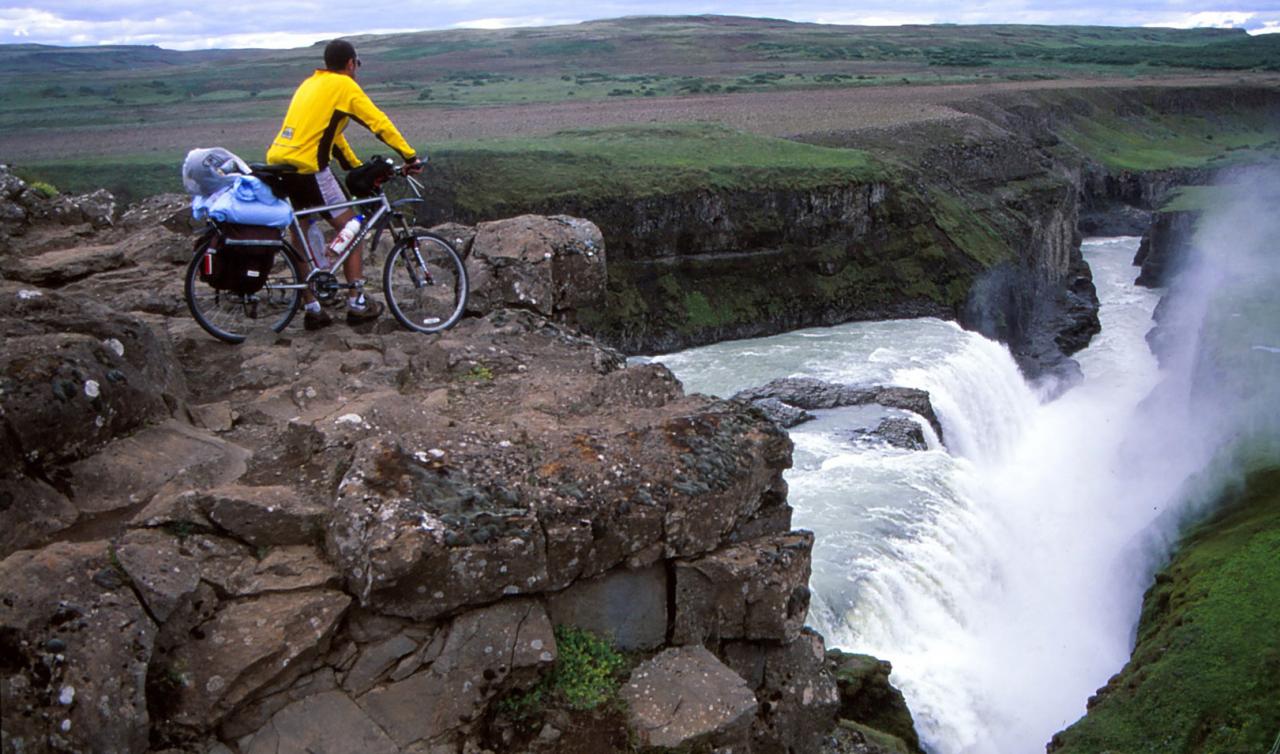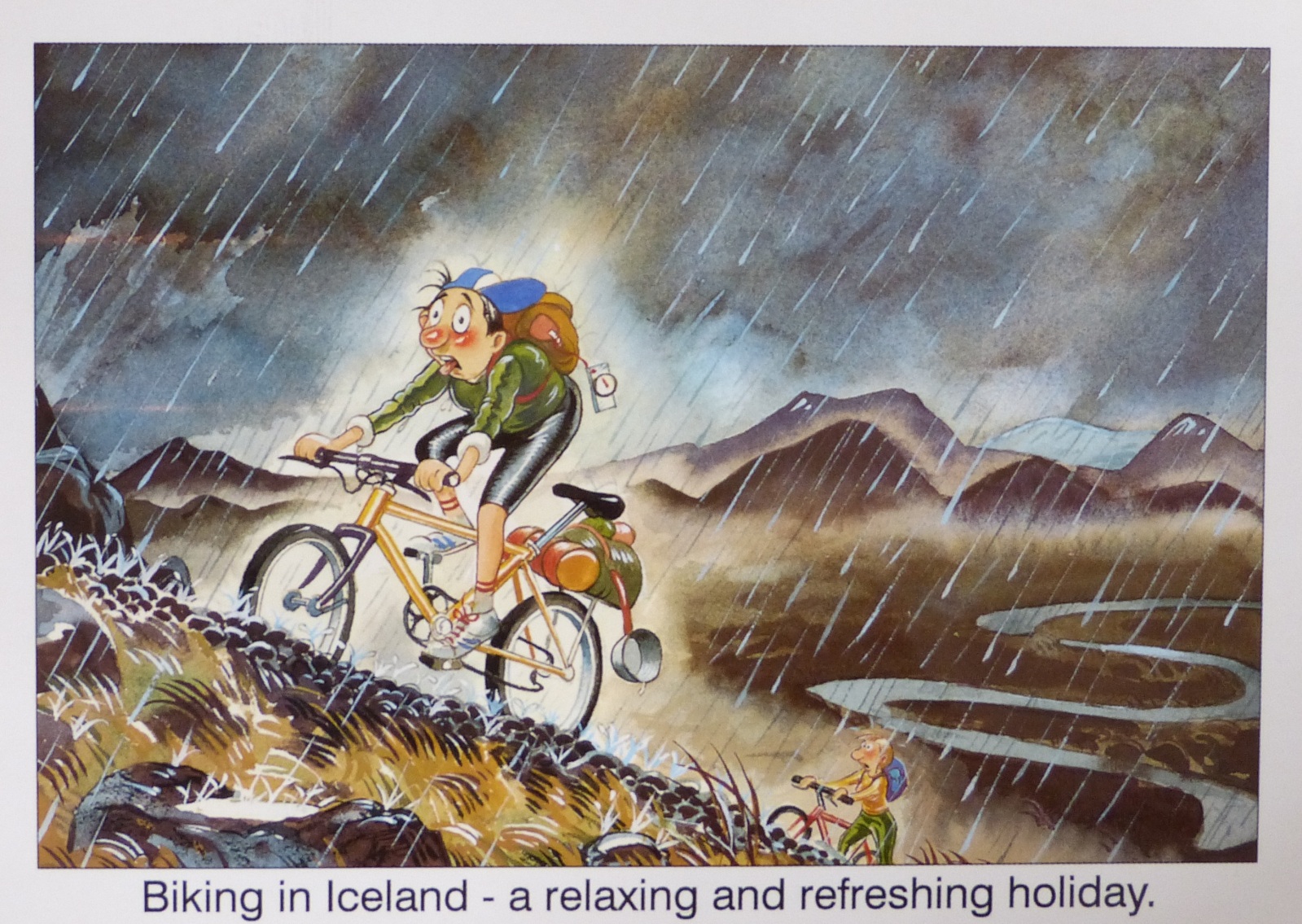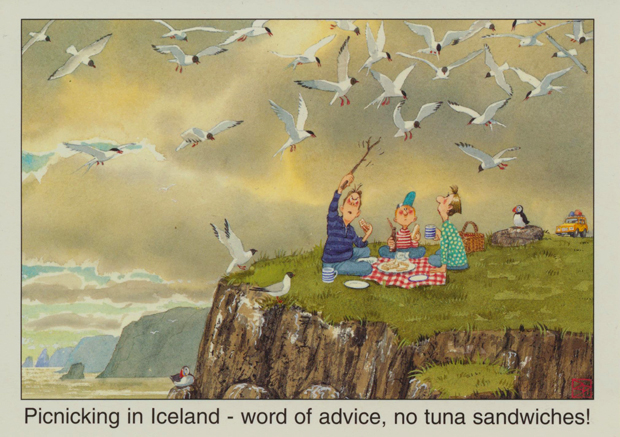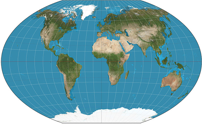Iceland 2006 bike tour - Europa

CASCADA GULLFOSS
ICELAND, 'LAND OF FIRE AND ICE'
Iceland is a little country (103,000 km²; Castile and Leon region and Principality of Asturias are 104,000 Km2). However, its geomorphology stands out for its greatness and singularity. 11.5 per cent of the country´s surface is covered with ice. It houses the most voluminous and the second largest in area glacier in Europe (Vatnajökull Glacier). It is the richest country in the world in hot springs and geothermal areas. It is there the most important vocanic fissure of the planet (Craters of Laki), more than 25 Km long and more than 100 craters. Dettifoss Falls is reputed to be the most powerful in Europe and, in its geography converges North American Plate and Eurasian Plate allowing to watch the graben that crosses the island from North to South.
The Hringvegur -or Þjóðvegur 1 in Icelandic- is the only road around the island. Far from being a highway, there is only one way, resulting in a wonderful experience cycling across its 1,339 kilometres with almost no traffic at all. That road was our thread during the Nordic country trip, touched in natural landscapes that Erik the Red looked at during his exile in Iceland in the 10th Its low population density (2.9 pop. per km²) and the indifference they show toward the tourist, made the island a unique destination to enjoy cycling and Nature in solitude.
full path of the bike trip in Google Maps Engine.
Desnivel positivo: 1.515metros
Desnivel negativo: -1.367metros
Pendiente máxima positiva: 20,4%
Pendiente máxima negativa: -15,8%
Pendiente media positiva: 3,6%
Pendiente media negativa: -3%

Parque Nacional Skaftafell y cascada Svartifoss
Lago Jökulsárlón
Glaciar Vatnajökull
Colonia de frailecillos y araos de Brünnich de Ingólfshöfði
Paso de montaña de Öxi
Lago Mívant
Zona volcánica de Krafla
Cascada Dettifoss
Cascada Godafoss
Pista F-35
Cascada Gullfoss
Geíser Strokkur
Parque Nacional Pingvellir
Sleeping bag Vango Ultralite 1300M R
Air bed Therm-A-Rest NeoAir All Season
Mat
Burner MSR Pocket Rocket
Front Light Petzl Tikka XP (40 lumens)
Dry bag 30l.
Camera: Réflex Kikon F60. Lenses: Cosina 19-35mm and Nikkor 70-300mm
Films 35mm Fuji Velvia 50, Fuji Provia 100F and Fuji Sensia 400
Tripod Cullmann Primax 180
Fork Marzocchi MX COMP ETA/2006
Two saddle bags Blackburn
Front bag Lowepro
Speedometer Odometer Cateye Velo 8
Iceland does not belong to the E.U.. However, it belongs to Schengen Area, so it is possible to travel there as a tourist with your ID card only. Anyway, it is advisable to have your passport.
Despite doing the trip in summer time you must be careful with your clothes. Average temperature in July in Reykjavik is 11º C., and 15 days is going to rain approximately. Along the journey we had rain, strong wind and fog. Exemplifying that we found this postal card in a newstand in Akureyri.

In Iceland we were unexpectadly attacked by a little bird, similar to a seagull: The Arctic tern (Sterna paradisaea). The plumage is white in its body and wings, black head. They nest close to the road, that is the reason they defend their territory and progeny conscientiously against whoever dares approach riding on bike. Another hard moment is snack, as you can imagine watching the postal card.

There is no need of vaccination to visit Iceland. Nevertheless, visit the following page: Ministry of Health, Social Services and Equality (Spain).
The current currency of Iceland is Icelandic Krona (ISK). In some places. Mostly touristic places, you can pay with Euros. You can exchange currency at Keflavík International Airport or any bank. In Iceland it is possible to pay anything, no matter the quantity, by credit card or charge card. It is the most common and accepted method of payment, much more than cash.
In the following link: Ministry of foreign affairs and cooperation (Spain), you can find daily updated information about country travel advice.




















